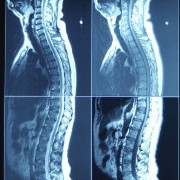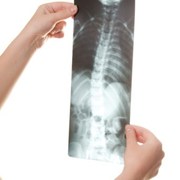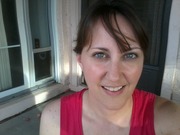Our human spines are articulated with individual vertebrae to help us move, flex, and bend. While some curvature in the spine is natural, lateral or side-to-side curving of the spine is undesirable and is known as scoliosis. Scoliosis affects about 2 – 3 percent of the population, the majority young women.
Other health issues such as spina bifida, muscular dystrophy, and celebral palsy may cause lateral curving of the spinal column. However, most cases of scoliosis are idiopathic, or have no known cause. In fact, according to the iScoliosis website, most cases of idiopathic scoliosis occur in people with no other health issues.
Idiopathic scoliosis is named, based on the patient’s age: infantile (children under the age of 3), juvenile (3-9 years), adolescent (10-18), and adult.
Adolescent Idiopathic Scoliosis (AIS) is the most common form of scoliosis and occurs in young adults around the onset of puberty. The iScoliosis webpage stresses that early detection is the key to treating AIS and other forms of scoliosis.
A simple screening often performed by the school nurse is known as the Adam’s Forward Bend Test. Usually administered in schools during fifth or sixth grade, The Adam’s Forward Bend Test has the student lean forward at the waist with feet together. This way, the nurse or examiner can detect any spinal curvatures.
According to The U.S. National Library of Medicine on PubMed.com, symptoms of scoliosis include low back pain, fatigue in the spine after sitting or standing for a length of time, shoulders or hips that appear uneven, and spine shape curving to one side.
Your doctor will schedule an X-ray to view the actual curve of the spine. Other screenings may include an MRI or scoliometer. An MRI can be recommended if the X-ray shows something unusual. The scoliometer measures the spinal curvature.
According to the PubMed webpage, treatment is based on the cause, size and location of the spinal curvature, as well as number of years left of growth for the child. Treatment for scoliosis can include observation, bracing, or surgery. Most cases of AIS don’t require treatment, but are monitored every six months.
If curves increase, braces are generally recommended to slow the scoliosis. Back surgery is usually required on severe curves and is performed through an incision in the back, under the ribs, or through the abdomen. The surgeon corrects the curve and fuses the bones in place, using metal rods. Most cases don’t require complicated treatment, and children can resume their active life soon afterwards.
Sources:
iScoliosis. Have Questions About Scoliosis? Web. 6, Dec. 2011.
http://www.iscoliosis.com
PubMed Health. Scoliosis. Web. 6, Dec. 2011.
http://www.ncbi.nlm.nih.gov/pubmedhealth/PMH0002221
Reviewed December 8, 2011
by Michele Blacksberg RN
Edited by Jody Smith





Add a CommentComments
There are no comments yet. Be the first one and get the conversation started!